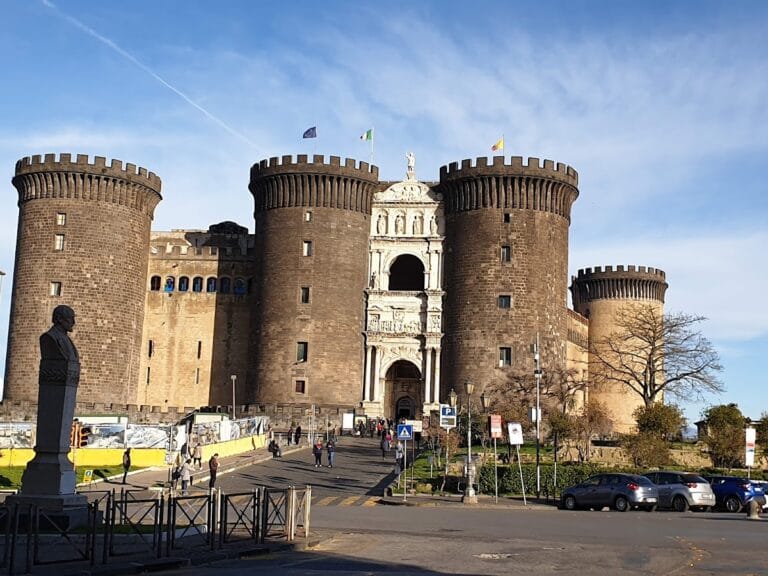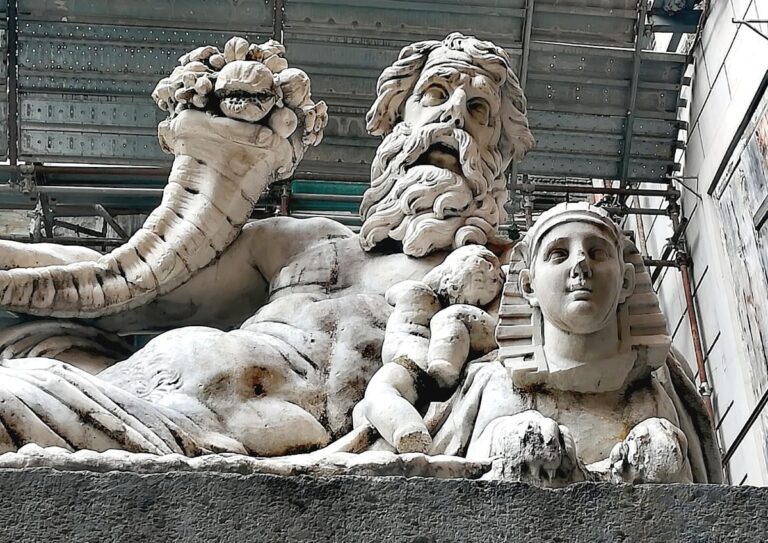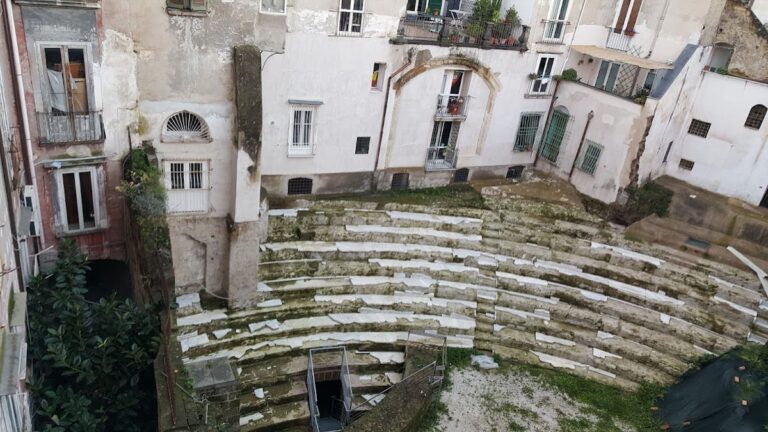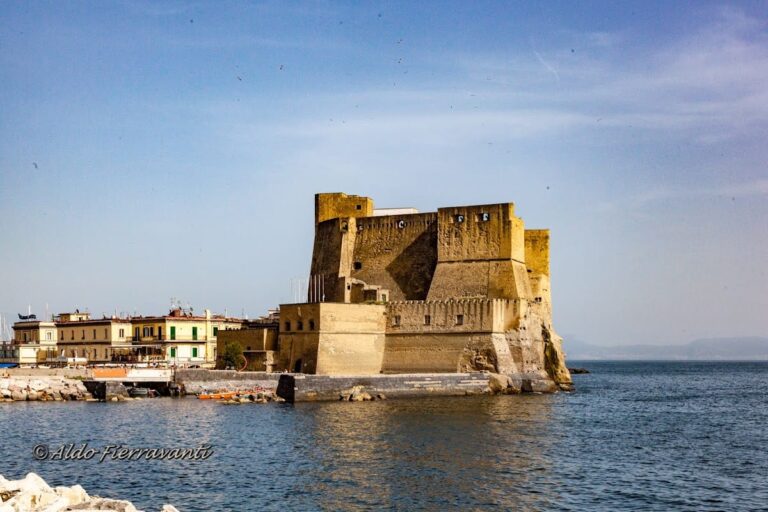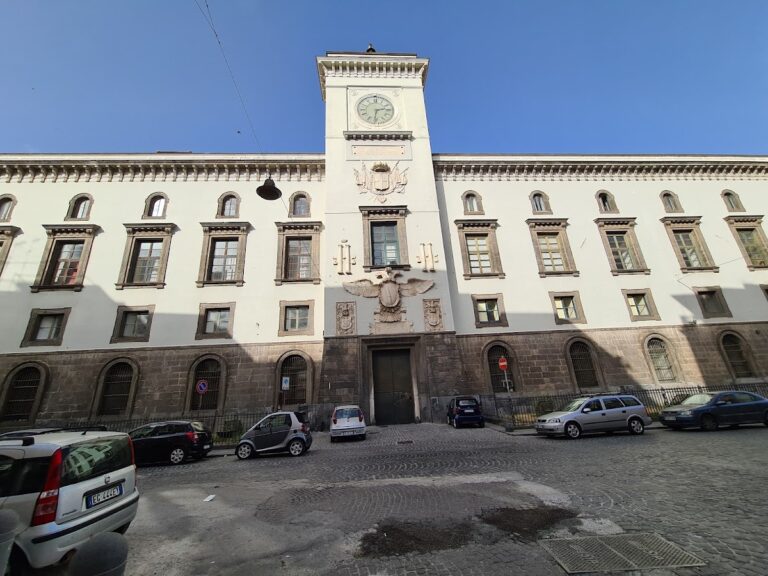Castel Sant’Elmo: A Medieval Fortress in Naples, Italy
Visitor Information
Google Rating: 4.6
Popularity: Very High
Google Maps: View on Google Maps
Country: Italy
Civilization: Unclassified
Remains: Military
History
Castel Sant’Elmo is a medieval fortress situated on the Vomero hill in the city of Naples, Italy. It was initially constructed by the Anjou dynasty, beginning on the site of an earlier Norman observation tower known as Belforte. The earliest confirmed building phase dates back to 1329 when King Robert the Wise of Naples ordered the fortress’s construction. Its initial design was developed by architects Francesco de Vico and Tino di Camaino, with work continuing under successive architects Attanasio Primario and Balduccio de Bacza. The castle reached completion in 1343 during the reign of Queen Joanna I of Anjou. Early on, Castel Sant’Elmo served defensive and surveillance purposes, taking advantage of its vantage point over Naples.
The fortress’s military importance became evident when it faced its first siege in 1348 by Louis I of Hungary, shortly after the assassination of Andrew of Hungary. Over time, the stronghold witnessed multiple occupations including by Charles of Durazzo and later became contested ground between French and Spanish forces in the 16th century. In 1416, Queen Joanna II transferred ownership by selling the castle to Alfonso V of Aragon for 10,500 ducats, marking the beginning of Aragonese influence.
In 1537, Emperor Charles V, along with the Spanish viceroy Don Pedro Álvarez de Toledo, commissioned a significant rebuilding project to reinforce the fortress’s defenses in line with evolving military needs. Renowned architect Gian Giacomo dell’Acaya was responsible for completing this reconstruction by 1546, giving the fortress much of its characteristic six-pointed star shape.
In 1587, a severe lightning strike caused a catastrophic explosion in the castle’s powder magazine. The blast resulted in the deaths of 150 people and destroyed several key structures, including the church of Saint Erasmus, the castellan’s palace, and military quarters. Restoration began over a decade later under Domenico Fontana, spanning from 1599 to 1610.
From the early 17th century, Castel Sant’Elmo functioned primarily as a prison. It housed notable inmates such as the philosopher Tommaso Campanella between 1604 and 1608, and the princess Giovanna di Capua during 1659. During the 1647 Neapolitan revolution, the castle provided refuge for the viceroy Rodrigo Ponce de León. Despite a siege by popular forces, the fortress resisted largely due to internal divisions among the rebels. Notably, the castle fired artillery into the city, though the damage caused was limited.
The fortress was again besieged in 1707 by Austrian troops and later in 1734 by Bourbon forces, reflecting its continued strategic role amid shifting European power struggles. During the turbulent years of the French Revolution, Castel Sant’Elmo was used to imprison Jacobin supporters including Mario Pagano and Gennaro Serra di Cassano. In the 1799 Neapolitan uprising, republicans seized the castle, raised the Neapolitan Republic’s standard, and planted a tree of liberty, symbolizing revolutionary ideals. After the republic’s defeat, many revolutionaries were confined within the fortress.
The castle remained a military prison until 1952. Subsequently, it served as housing for naval personnel and their families until 1976 when an extensive restoration began. Since then, the castle has been preserved and converted into a cultural site open to the public.
Remains
Castel Sant’Elmo exhibits a distinctive six-pointed star-shaped layout, a hallmark of 16th-century military architecture designed to improve defense against artillery. Each point extends approximately twenty meters from the core, creating a configuration without traditional defensive towers. Instead of buttresses, large open artillery embrasures occupy the recessed corners, a design initially met with skepticism but later demonstrated to enhance functional defense.
The fortress is encircled by a moat, which once added an additional barrier between the defenders and any attackers. Water supply was secured by a substantial cistern system beneath the parade ground, consisting of two large tanks that ensured the fortress remained operational during sieges. A modern water tank with a capacity of 400 cubic meters is integrated into the fortress’s walls to serve the surrounding Vomero area today.
The main access path involves a steep inclined ramp leading to a small bridge. This bridge is flanked by walls pierced with twelve defensive loopholes on each side, narrow vertical slits through which guards could observe and fire upon enemies. Furthermore, seven additional loopholes protected those stationed at the drawbridge. The entrance portal, crafted from local piperno stone, prominently displays the imperial coat of arms of Emperor Charles V featuring the double-headed eagle, along with a marble inscription commemorating his reign and the viceregal tenure of Pedro de Toledo.
Inside the castle stands a Napoleonic-era guillotine-style gate situated near the entrance, guarding the internal corridors. The interior houses numerous prison cells and halls, many of which once served as detention areas. Large windows provide expansive views over the city of Naples and its historic center, a reminder of the fortress’s original function as a lookout point and stronghold.
At the parade ground lies the Castellan’s Tower, which contains the remains of the commander’s quarters and accommodation for his staff. The pavement here dates back to the fortress’s early building phase, preserving a physical link to its medieval origins.
Outside the main defensive ring and beyond the moat, a small church dedicated to Our Lady of the Pillar dates to 1682, reflecting the Spanish influence over Naples during that period. Another significant ecclesiastical structure is the small church of Saint Erasmus, erected in 1547 by Spanish architect Pietro Prato and remodeled in the early 17th century by Domenico Fontana following the 1587 explosion. This church is adorned with a richly decorated maiolica (tin-glazed pottery) and terracotta floor, alongside paintings by artists such as Luca Giordano, Antonio De Bellis, Francesco De Maria, and an unidentified late Mannerist painter. It also contains the tombstones of former castellans, commemorating past commanders of the fortress.
The church’s vault features an 18th-century fresco depicting the Assumption of Mary. At the main altar stands a sculpture of Saint Erasmus, the fortress’s patron saint. A piperno stone sentry box from the Bourbon period offers views across the nearby Posillipo cape, Nisida island, Miseno cape, and the volcanic Phlegraean fields, illustrating the castle’s once strategic visual control over the surrounding region.
Finally, a spacious modern hall now occupies part of the castle’s interior, designed to accommodate conferences without altering the original structures. This adaptation maintains the fortress’s historical fabric while fulfilling contemporary cultural functions.





